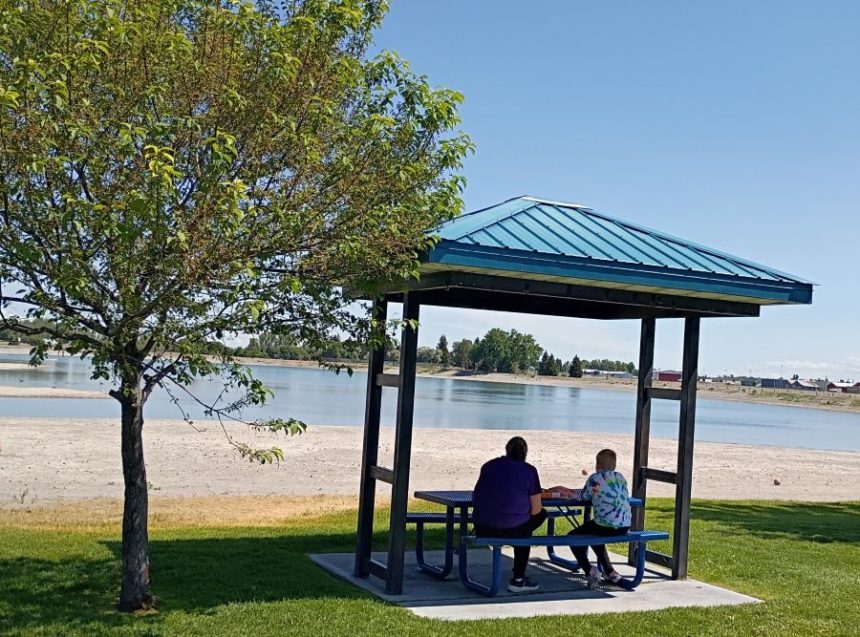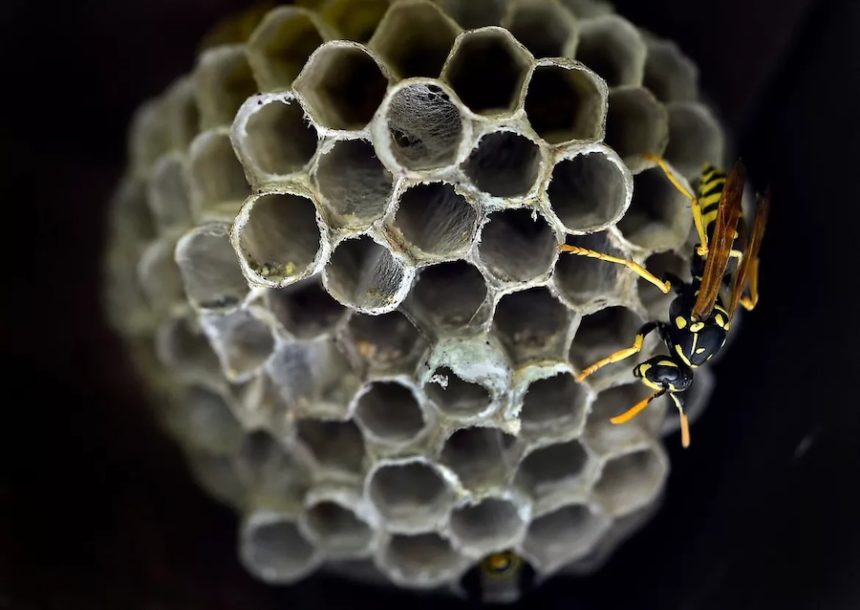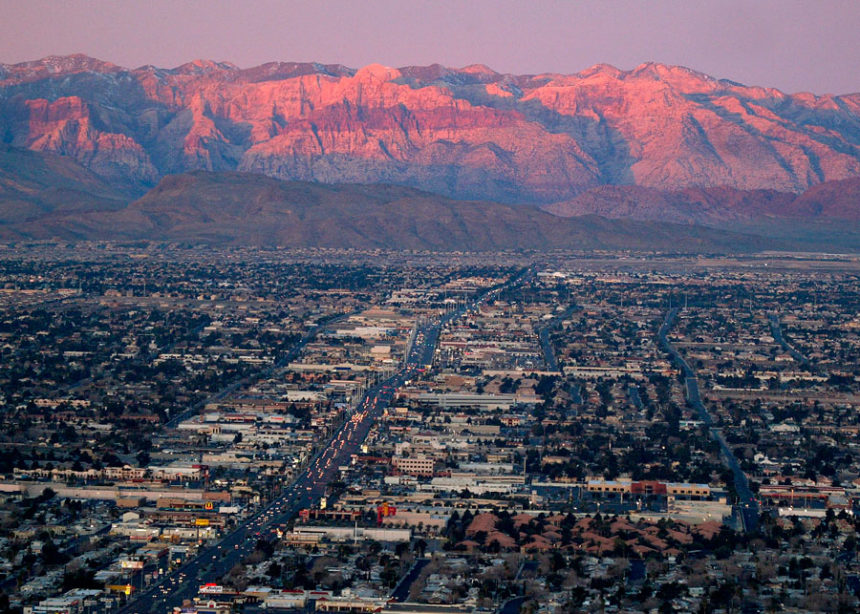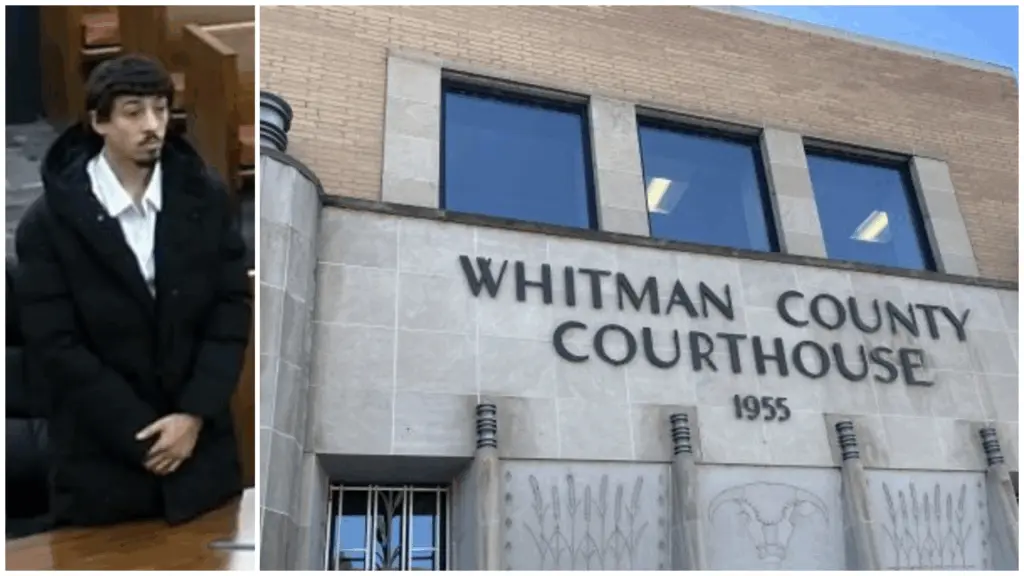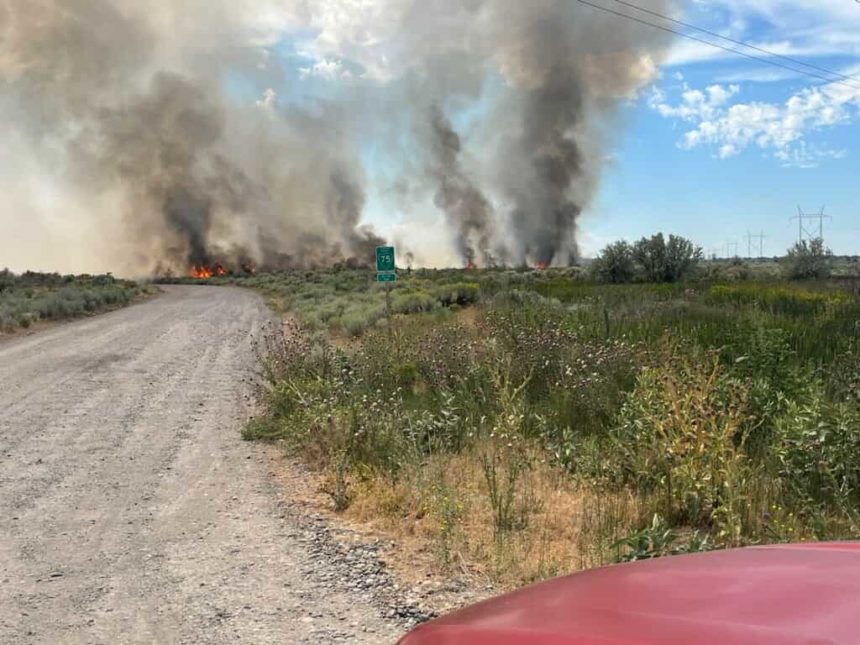The Blackfoot In addition to not being full in time for this year’s Celebrate Blackfoot event on Saturday, June 28, Jensen Grove, a well-liked summertime recreational destination, is probably not going to be full this summer at all.
The 55-acre lake is a popular spot for boating, water skiing, jet skiing, swimming, and fishing when the water levels are stable.
According to Blackfoot Mayor Mark Carroll, all motorized water sports have been canceled because the water level is too low.
Although individuals are still allowed to play, kayak, canoe, and fish in the shallow water, the lake is not deep enough to accommodate larger vessels.
Water diverted from the Snake River normally fills Jensen Grove, with some extra overflow from the Corbett Slough canal. However, the lake is largely empty this spring due to weather-related issues and damage to the city’s water diversion system.
Carroll clarified that agricultural demands, not recreational needs like those at Jensen Grove, are the basis for current water priority. Until the end of July, no water is anticipated to be released for lake use, and even then, it would take about a month to fill the lake.
The Snake River’s agricultural water is managed by Water District 1, which is situated in Idaho Falls. In the area, which includes the Snake River (upstream of Milner Dam) and its tributaries, the district is in charge of managing irrigation and the distribution of streamflow from the river to farmlands and canals.
RELATED: This explains why Jensen Grove’s water level is so low.
Carroll stated that it seems unlikely that the lake would be full this summer. Because of the water calls coming from Twin Falls, the watermaster does not anticipate sending any water down the river until the end of July. Furthermore, we are unable to predict when that will alter.
“I understand that there have been some diversion dam issues getting water into Jensen Grove,” said Craig Chandler, the District 1 Watermaster, confirming this. Additionally, their water rights have been reduced, and they won’t be available for the remainder of the year.
Earlier in the season, flood mitigation releases from Palisades Reservoir almost filled the lake with heavy flows from the Snake River. But the city’s diversion dam was also harmed by the swift-moving water, which washed out important regions, formed sandbars, and clogged the intake tunnel with silt. The high river level momentarily concealed the issue, making the damage invisible at first.
Since the risk of flooding had passed and the snowfall levels were lower than anticipated, the Idaho Department of Water Resources reduced the river flow from Palisades by the end of May. The flow of the Snake River thus decreased dramatically, reaching about 1,500 cubic feet per second. To fill the lake gradually, the flow must be at least 5,000 cubic feet per second; a flow of 7,000 cubic feet per second is preferable.
“I can’t tell you the number of hours that the city has spent on this problem,” Carroll admits, acknowledging that the lake’s water shortage has been a persistent issue for the previous few years. We are working on a long-term solution after determining that the 30-year-old diversion system is no longer effective.
Repairing the broken diversion dam and putting up a pump system with a generator to help transport water from the river even during times of low flow are the long-term solutions. Cooperation between the Army Corps of Engineers, the Bureau of Reclamation, and the Idaho Department of Water Resources will be necessary for this project.
Although a lot depends on Mother Nature, our objective is to have the new setup operational by the beginning of next year. Carroll stated, “She’s good to us sometimes and not always.”
Visitors at Jensen Grove can currently enjoy the lake’s remaining water, and they are urged to schedule land-based events for this year’s Celebrate Blackfoot and the years to come.
